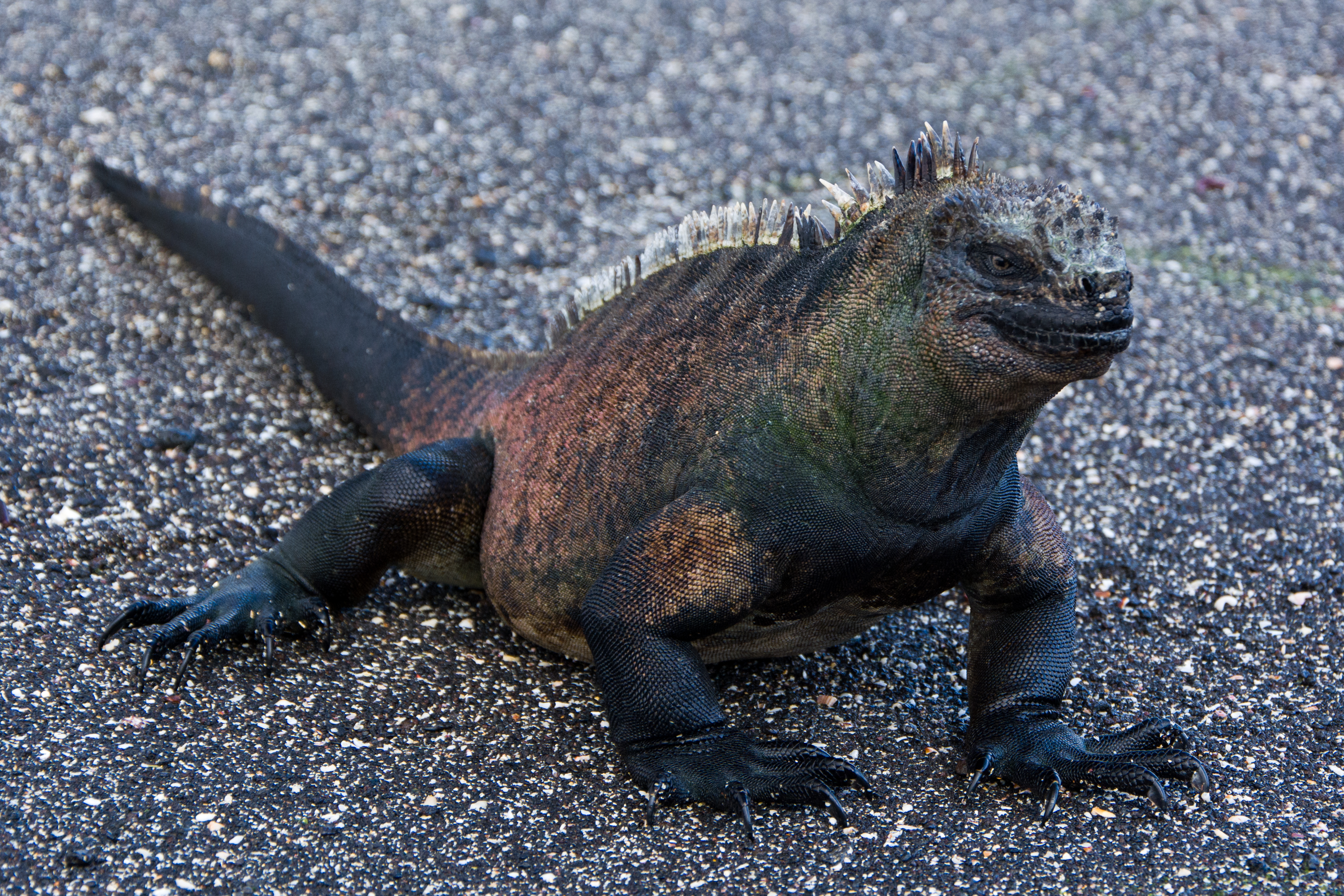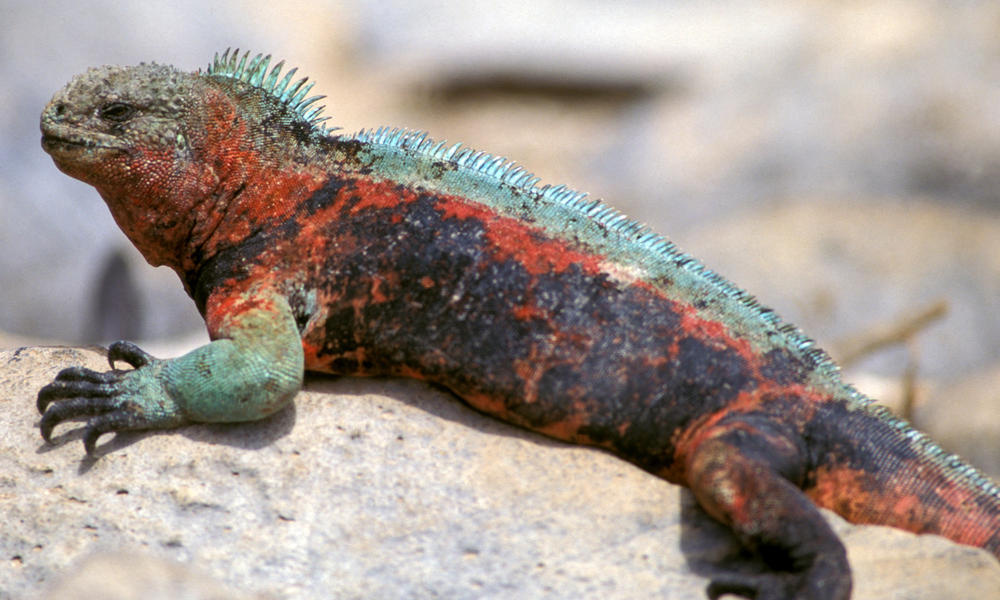 |
| Marine iguana http://en.wikipedia.org/wiki/Marine_iguana |
 |
| Color blotches on marine iguana https://worldwildlife.org/species/marine-iguana |
 |
| Marine iguana in the water http://futurepets.files.wordpress.com/2011/12/marine-iguana1 |
When they feed they consume salt water which can be toxic so they excrete concentrated salt crystals from a nasal gland by sneezing. The excess salt from a crust like layer on their nose.
They breed every year but individuals usually breed once every two years. The females lay between 1-6 eggs up to 300 meters inland. they usually guard the burrows for several days and then leave the eggs to incubate. The young hatch and look and act like miniature adults and have no parental care.
 |
| Marine iguana showing salt crust on nose http://animals.nationalgeographic.com/animals/reptiles/marine-iguana/ |
The marine iguana is on most of the islands in the Galapagos and each island shows a little difference on how the iguana looks. The difference could be in size, shape and color. They live in colonies where shallow reefs occur with an extensive intertidal zone and rocky coastline. They are classified as vulnerable and are mostly threatened by non native species such as cats, dogs, and rats which either eat the eggs or kill the adults and juveniles. Interestingly they are very sensitive to environmental fluctuations caused by El Nino. But they are able to recover in years that are not El Nino. The marine iguana is a truly fascinating animal.
Resources: http://www.arkive.org/galapagos-marine-iguana/amblyrhynchus-cristatus/
http://animals.nationalgeographic.com/animals/reptiles/marine-iguana/
http://www.geo.cornell.edu/geology/GalapagosWWW/MarineIguanas.html
It's really interesting how they are so sensitive to El Nino years. A Yale study from 1997 suggested that global climate change will increase the strength and frequencies of El Nino's. This affects natural populations of marine iguanas and their capacity to respond to environmental stresses. (http://news.yale.edu/2007/12/12/global-climate-change-impact-el-ni-o-gal-pagos-marine-iguanas).
ReplyDelete